A Special Pilgrimage to Nepal
Nomads Clinic Pilgrimage 2015
What better way to welcome the new year than with a story about some of our most generous and dedicated supporters, Roshi Joan Halifax, writer Rebecca Solnit and the Nepal Nomads team, who recently made a pilgrimage to one of the most remote regions on earth to share Little Sun light and healing.
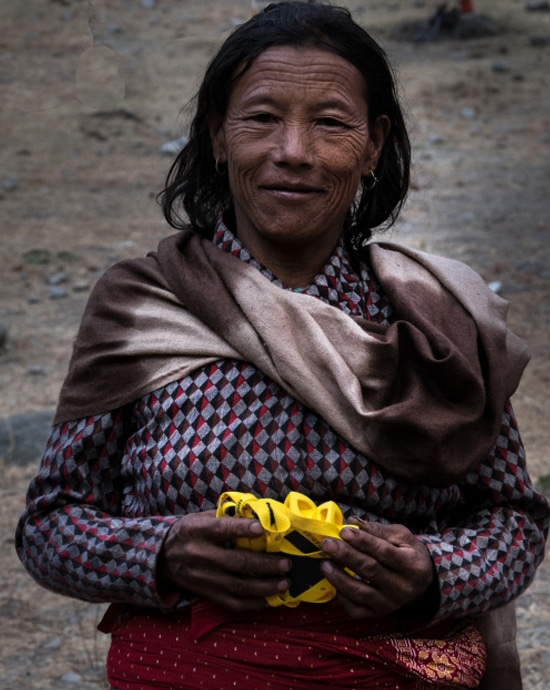
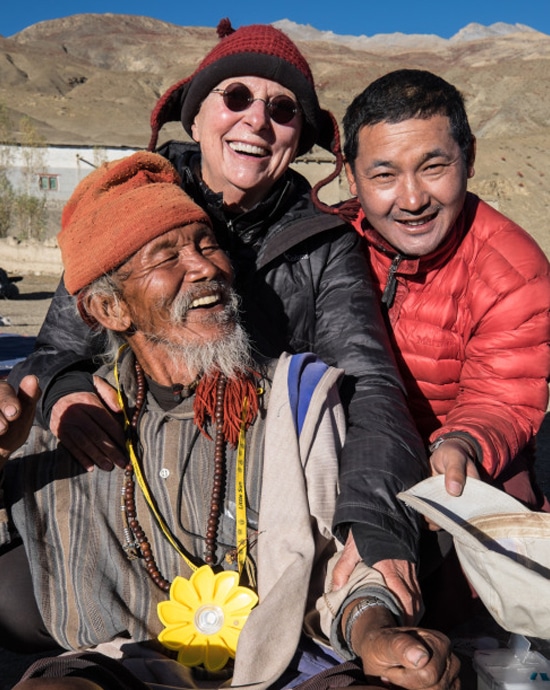
Roshi Joan Halifax, Ph.D., (pictured above, centre) is a Buddhist teacher, Zen priest, anthropologist, and pioneer in the field of end-of-life care. She is founder, Abbot, and Head Teacher of Upaya Institute and Zen Center in Santa Fe, New Mexico and is also a great inspiration and long-time friend of Little Sun. Joan started the Nomads Clinic in 1980 and has made annual trips to Nepal and Tibet for thirty-five years.
Joan, along with the renowned writer, historian and activist (and also a great friend of Little Sun), Rebecca Solnit, recently made their annual medical pilgrimage to the Himalayan region and Tibetan Plateau with an incredibly dedicated team that included a doctor, four nurses, and a nurse practitioner; a young lama, and a Nepali nurse; a German acupuncturist; and an amchi, (practitioner of Tibetan medicine) along with renowned K2 and Everest mountaineer Pasang Lhamu Sherpa Akita and her husband Tora Akita, who runs a Sotai and Kai Therapy (Japanese Physiotherapy) Clinic in Kathmandu. The group also included a support team of Nepali mule men, horsemen, cooks, guides, and translators.
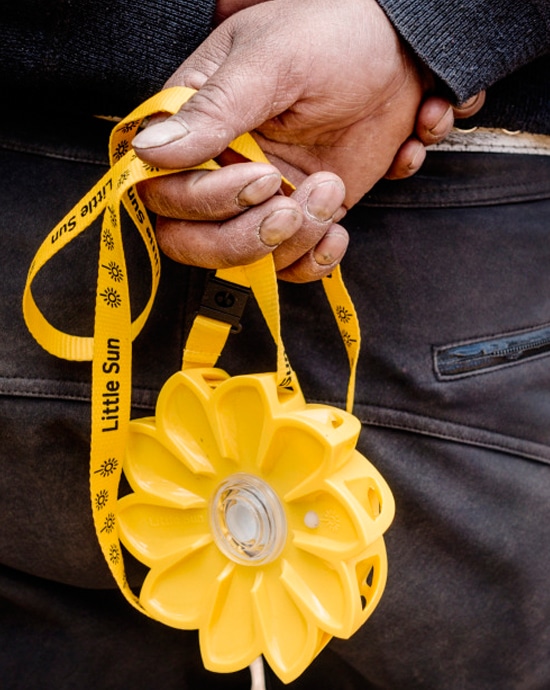
The purpose of the pilgrimage was to offer the remote mountain communities free medical care and training. Another key part of this journey was to distribute safe, clean and sustainable Little Sun solar lamps to this part of the world that needs them so very much to get on in every day life – now more than ever since the devastating earthquake.

Rebecca Solnit recently published a beautiful account of the journey for the New Yorker. As she describes in the article, the scale and effort to provide light and care was immense:
“One autumn day, the Nomads Clinic, a medical-service trip, pilgrimage, and adventure expedition, set off from Juphal with six riding horses, and fifty pack mules laden with a month’s worth of food, cooking equipment, camping gear, and clothing. Six duffels were stuffed with medicine and medical equipment—asthma inhalers, deworming pills, vitamins, analgesics, antibiotics. Others held hundreds of solar lights, toothbrushes, sunglasses, and reading glasses, to be given away. It was the 2015 edition of a mobile clinic that Joan Halifax, a seventy-three-year-old American teacher of Zen Buddhism, has been coordinating since the nineteen-eighties, to provide medical care in places where there is little or none.”
The Nomads’ journey, as described by Rebecca, took them through an ever-changing landscape as the team climbed higher and higher into the mountains: from rice paddies and lush forests, to Bhotia fortress hamlets above the Himalayas on the Tibetan plateau, to remote Dolpo.
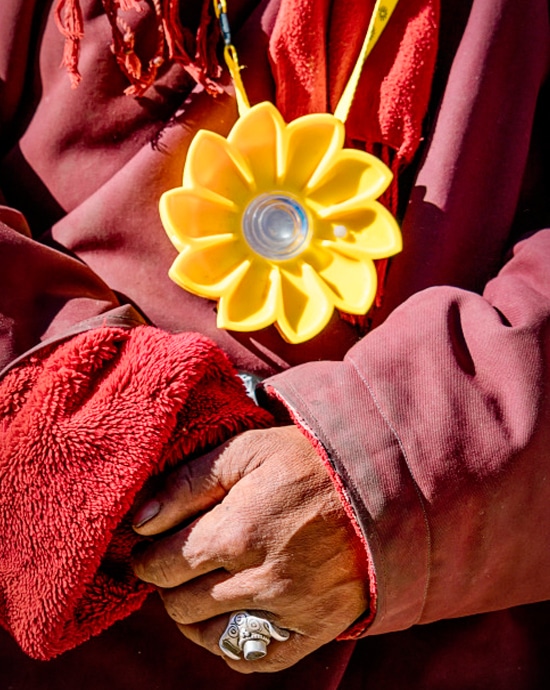
The northernmost parts of the region, some of the highest villages on earth, are inhabited by Rokpa farmers and Drokpa nomads from Tibet who are cut off from the rest of the world by snow for most of the year. This is a place where fossil fuels are not part of daily life and in much of the region, there are no roads. Anyone or anything that is capable of carrying goods — men, women, children, horses, mules, and yaks — take up a burden on the tiny, twisting trails.
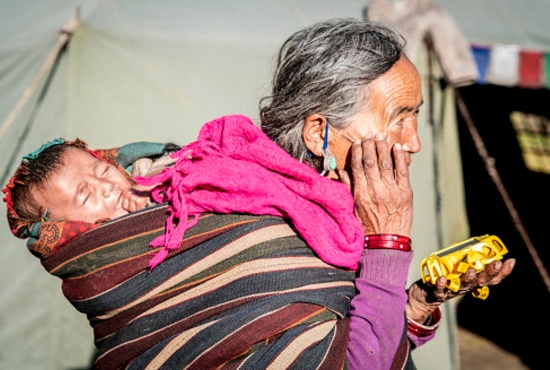
As Rebecca describes in her piece, a sense of spirituality permeates throughout the region and it has been said that Dolpo is one of the “hidden valleys” created by Guru Rinpoche as a refuge for those of exceptionally pure mind. These valleys are nestled between mountains of great beauty – the heart of one of the last enclaves of pure Tibetan culture.
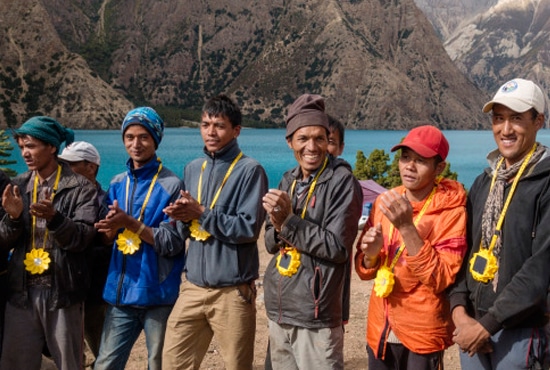
The first clinic the Nomads set up was at Lake Phoksundo “the deepest and clearest lake in Nepal” with an impossibly beautiful turquoise hue. The patients that came to the clinic had digestive troubles, infections, and, often, strained necks and sore joints from a lifetime of carrying big open baskets along punishing mountain passes.
“The abbot welcomed the Nomads Clinic into the temple, and locals asked the doctor and the nurses to treat wounds, address pains, listen to stories. The first evening, a horseman brought in a comrade, who was too sick to walk. “He was such a beautiful man, and he was almost dead when I first saw him,” the doctor, who diagnosed a severe kidney infection and treated him with antibiotics, said. The man, who was in his early forties, had a drawn, sun-darkened face, a faint mustache, the high cheekbones of most of the Nepalis in the region, and a thick coil of crimson strands of wool around his braided black hair. He wore camo-patterned tennis shoes. The next day, he was back on his feet, lingering outside the monastery to make contact with the doctor and the nurses coming from meditation inside.”
The Nomads set up five clinics in all during their month-long journey and treated almost seven hundred people.
The concept behind the clinics was to create a balance and interactivity between the weight of Eastern Medicine and modern Western techniques for healing the body and mind. Western clinicians were also given the opportunity to learn from the Amchis and others about how Tibetan medicine is practiced, and how meditation and spiritual insight are key to the types of medicine and treatment the Amchis give.


Not only was the pilgrimage a chance to provide practical, immediate medical care, but to also create an ongoing, fruitful dialogue about how the two forms of medicine can learn from and help each other to best serve the people who need care in the future. Just like the philosophy behind Little Sun, the clinics bring long-lasting, long-term solutions through knowledge and guidance rather than the limited, short-term fix of charity.
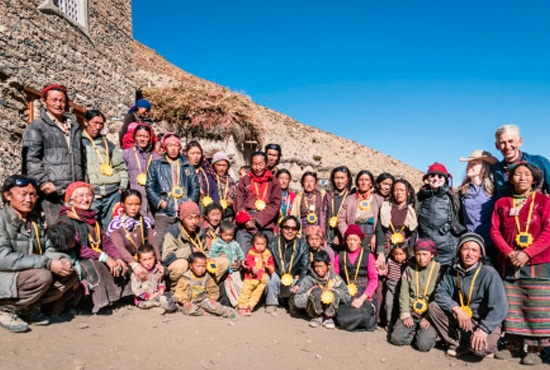
However removed from the rest of the world the region may seem, the effects of climate change are becoming more and more apparent. As Rebecca notes in her article, throughout the region, the snow and the glacial ice are withering away.
“Halifax recalled a Tibetan prophecy, “When the mountains wear black hats, the world will end,” and interpreted the black hats as the peaks without snow and ice. One day, some of the clear, cold streams and rivers flowing through upper Dolpo might dry up for part of the year, or stop entirely. The people who never had coal or electricity might be forced out of this place where the butter lamps are still lit before golden Buddhas in the old painted gompas, and where the barley is harvested by hand.”
Perhaps more than any other region on earth, solar energy is crucial for the survival of the peoples of the Himalayas. And the time to act on this knowledge is now.

Photo credits:
1, 2, 7, 12, 15: Becky Gaal
3, 4, 5, 6, 8, 9, 10, 11, 13, 14, 16, 17: Cira Crowell

